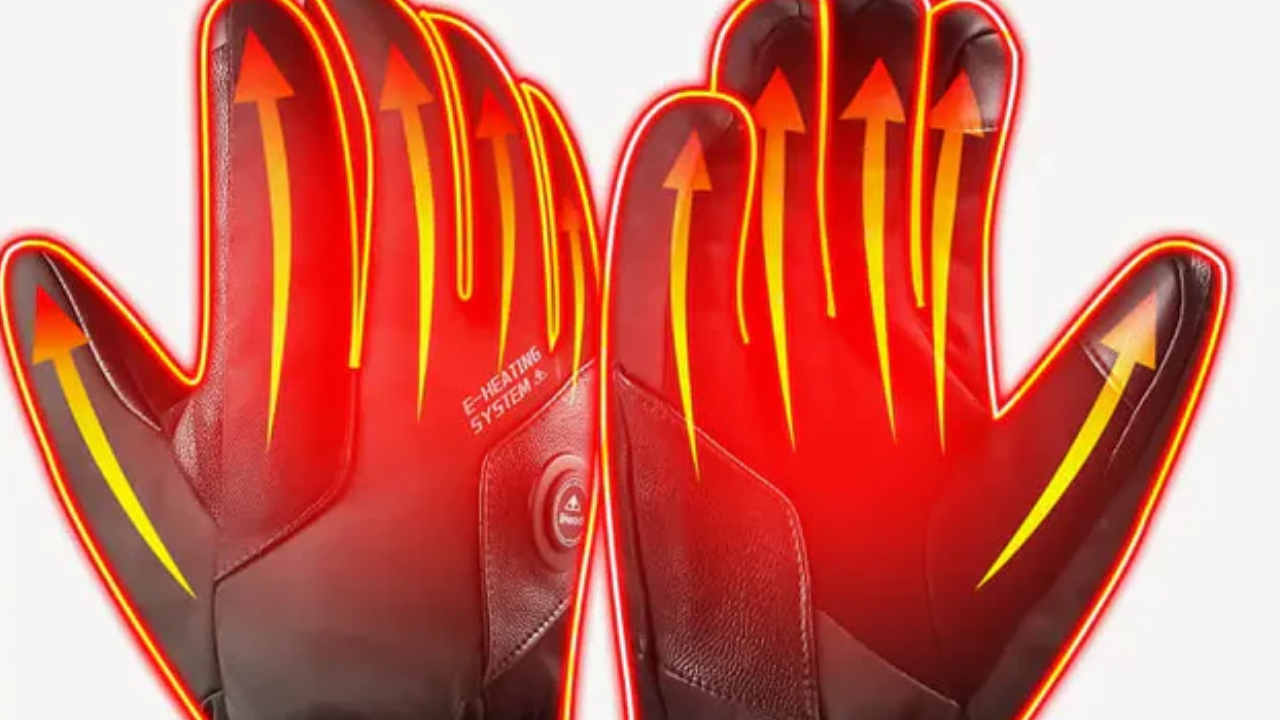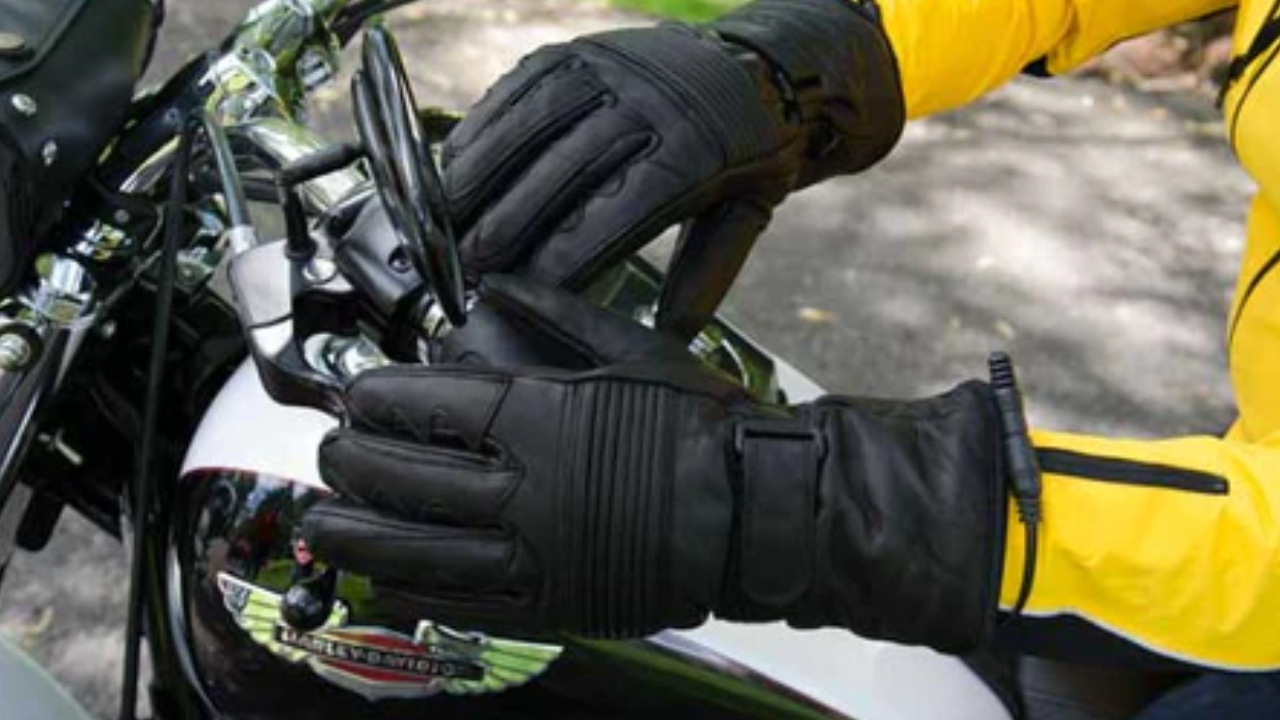For motorcycle riders, cold weather has special difficulties because it can be uncomfortable and dangerous, which can ruin the fun of riding a motorcycle. Biting cold can cause numb fingers, decreased hand dexterity, and general discomfort, which makes it difficult for riders to keep their bikes under ideal control.
Whether you're an avid outdoor person, a motorcycle rider, or just enjoy taking morning jogs, you can welcome the winter season with warm and comfortable hands when wearing iHood heated motorcycle gloves.
In this blog, we’ll explore what heated gloves are and how they keep you warm in extreme cold.
What Heated Motorcycle Gloves Are and How They Work
Innovative additions are made to help riders overcome the difficulties that come with heating gloves for motorcycle riding in the winter. When riding a motorcycle in cold weather, these gloves with integrated sophisticated heating technology provide a reliable and adjustable source of warmth for the hands. Heated gloves usually use rechargeable batteries to power the heating elements that are positioned within the fabric of the glove.
The fingers and back of the hand are successfully warmed by the heat produced by these components. Since the temperature is frequently regulated, riders can customize the warmth to suit their tastes and the local climate. In addition to being made of weather-resistant fabrics that shield the hands from wind, rain, and snow, the gloves' construction includes insulating components to trap and keep heat.
The Importance of Considering Your Specific Riding Needs When Choosing Heated Gloves
Your unique riding needs must be carefully considered when choosing the best iHood heated gloves for motorcycle riding since these needs can have a significant impact on the functionality and efficacy of the gloves. This consideration is multifaceted and important in a number of ways.
Climate and Riding Conditions: It is crucial to consider the temperature range and the current weather in your riding area. If you ride in very cold weather on a regular basis, you might need iHood heated gloves with strong insulation and a lot of heat output. On the other hand, gloves with a more balanced approach to ventilation and insulation can be more appropriate if you frequently ride in milder temperatures.
Riding Duration and Battery Life: The amount of battery life that the gloves require is directly impacted by how long your rides are. Gloves with a longer battery life should be the top choice for riders who will be traveling long distances in order to maintain toastiness. Shorter commuter cycles might make quick-heating capabilities a priority, and gloves with smaller, lighter batteries might be plenty.
Temperature Customization: When it comes to warmth, different people feel differently comfortable. Remarkably iHood heated gloves motorcycles have temperature settings that can be adjusted, enabling riders to customize the heat output according to their own preferences and shifting weather circumstances. This personalization guarantees that the gloves meet your unique comfort needs.
Ease to Use: When biking, practicality is essential. Even with gloves on, the controls for changing the heat should be simple to reach and use. This makes it possible for riders to make the necessary corrections without being sidetracked, which makes riding safer and more enjoyable.


Types of Heated Motorcycle Gloves
There are several different kinds of heated gloves, and they all use different technologies and power sources to stay warm. It might be beneficial for riders to select the gloves that best fit their riding situations and preferences by being aware of the differences between these types.
1. Wired Heated Gloves
The electrical system of the motorcycle is directly connected to the wired heated gloves. They use a connected connection to take power from the bike's battery. During motorcycle journeys, the heated gloves that are wired in are connected directly to the motorcycle's electrical system, providing constant warmth.
Pros:
- As long as the motorcycle is operating, wired gloves can provide a constant supply of warmth because they take their power directly from the electrical system.
- As long as the motorcycle is in working order, riders don't have to worry about having to recharge their gloves.
Cons:
- The rider's movement is restricted and caution is needed when getting off the bike because they are physically attached to it.
2. Battery-Powered Heated Gloves
Because of their integrated rechargeable batteries, these gloves may function without relying on the motorcycle's electrical system. Rechargeable batteries are integrated into battery-powered heated gloves, providing mobility and flexibility.
Pros:
- Gloves with battery power don't need to be attached to the motorcycle, allowing for more mobility.
- These gloves are appropriate for a range of outdoor activities since they can be utilized on a motorcycle.
Cons:
- The length of warmth depends on the battery life; longer rides require recharging.
3. Hybrid Heated Gloves
Hybrid models incorporate both battery-operated and wired components. They feature a battery-powered heated motorcycle gloves backup for portability and may be linked to the motorcycle for continuous power.
Pros:
- To provide versatility in a range of riding situations, hybrid models integrate both wired and battery-powered components.
- These gloves can still be powered by the motorcycle in the event that the battery runs out.
Cons:
- In order to effectively employ both power sources, hybrid gloves may have extra controls that need to be mastered.
4. USB-Chargeable Heated Gloves
Although these gloves run on rechargeable batteries, there is a simple USB charging option. Warming gloves with USB charging support use replaceable batteries and provide convenient USB port charging. While charging times may differ, these gloves offer portability and ease, and versatility for a range of activities.
Pros:
- Riders may conveniently recharge the gloves using a variety of devices thanks to USB charging.
- They provide the same range of motion as gloves that run on batteries.
Cons:
- The amount of time needed to fully charge an item may differ, which could affect how convenient it is to use.
The Significance of Insulation Materials in Heated Gloves
The quality of the insulation used in heated gloves is crucial since it affects how well the gloves retain and transmit heat. This is a thorough examination of the significance of insulation.
Thermal Efficiency: By acting as a barrier, insulating materials keep heat from leaving the hands and entering the outside world. Good insulation makes sure that the heat produced by the heating components in the gloves is kept inside, giving the hands a comfortable microclimate.
Protection Against Cold: The hands are protected from the cold by insulation, particularly in inclement weather. Insulation helps to keep the gloves at a pleasant, constant temperature, protecting against numbness and discomfort by preventing the outside cold from getting inside.
Dexterity and Flexibility: The thickness of insulation materials for warmth and the thinness for dexterity must be balanced. The flexibility made possible by well-designed insulation guarantees that riders may grip the handlebars firmly and use the controls without difficulty.
Moisture Management: Certain types of insulation are made to wick away moisture, keeping hands dry. Retaining warmth requires dry hands, and moisture-wicking insulation keeps perspiration, snow, or rain from building up inside the gloves.
Breathability: Air exchange should be permitted via insulation in order to avoid overheating. Breathable insulation helps to keep hands cool by keeping moisture and heat from building up, especially on long rides.


Differences Between Different Glove Materials
Of course! Now let's examine the specifics of different glove materials, how they affect warmth, and how long they last:
Leather
- Material: Usually sheepskin, goatskin, or cowhide.
- Warmth: Natural insulation keeps you toasty in the winter. In damp conditions, it might not be as effective.
- Durability: Extremely robust and abrasion-resistant. Needs attention to keep flexibility.
Textile Fabrics
- Materials: A variety of man-made fibers, like polyester or nylon.
- Warmth: Adaptable to various weather situations; breathable and insulated.
- In very cold weather, leather might not offer as much warmth.
- Durability: It is possible to strengthen it for durability. Depending on the particular cloth, generally less durable than leather.
Gore-Tex and Waterproof Membranes
- Materials: Gore-Tex-style membranes, which are breathable and waterproof.
- Warmth: It promotes general warmth by keeping hands dry. Needs extra layers to provide warmth; not naturally insulating.
- Durability: Strong and impervious to water infiltration are its advantages. It Could increase weight and expense a little.
- Thinsulate and Insulation Layers
- Materials: Synthetic fibers or insulating materials such as Thinsulate.
- Warmth: Specifically made for insulation, it offers warmth without adding weight. If wet, it might not be as effective.
- Durability: Lightweight and resilient while retaining insulating qualities. Over time, performance could deteriorate.
Budget Considerations
With a range of price ranges, heated motorcycle gloves with different features, technologies, and quality are available to keep riders warm in cold weather.
Low-End/Entry-Level: For between $50 and $100, low-end or entry-level heated motorcycle gloves come with basic heating components and easy-to-use controls. These gloves could not have sophisticated features or be very durable, even though they offer standard insulation. Perfect for riders on a tight budget looking for basic, no-frills comfort for sporadic rides in cold weather.
Mid-range: iHood heated motorcycle gloves, which vary in price from $100 to $200, include superior insulation, more advanced heating technology with various settings, and more durable materials. These gloves achieve a compromise between affordability and cutting-edge functionality with added features like touchscreen compatibility, making them appropriate for routine cold-weather riding.
High-End/Premium:Priced at $200 and above, high-end or premium heated motorcycle gloves have sophisticated heating components, accurate temperature management, and quality materials like superior leather or sophisticated fabrics. For discriminating riders in harsh environments, these gloves offer outstanding comfort and performance with extra features like smart technology and longer battery life.
Conclusion
The correct heated gloves for motorcycles are an essential investment in comfort, safety, and an improved riding experience they're much more than just a winter accessory. Selecting gloves that fit your demands can guarantee that you stay warm while still being nimble, whether you're driving on a frigid commute or doing long trips. For a cozier and safer ride, put quality, thoughtful features, and the ideal ratio of performance to cost front and center.
For those just starting out in the realm of iHood heated motorcycle gloves, make wise choices to empower your adventure. Consider your riding style, riding needs, and weather while selecting gloves to ensure they meet your specific needs. If you want to balance price and quality, have a look at mid-range selections. The correct gloves improve your riding experience and keep you warm while also guaranteeing your comfort and safety when riding.
FAQs
Can Heated Gloves Get Wet?
While many heated gloves, particularly those made for motorcycle riders, include water-resistant qualities, they are not completely waterproof. While they are resistant to light snow and rain, extended exposure to these elements or submersion could jeopardize their performance and safety.
How Long Do Heated Gloves Last?
The frequency of use, quality, and upkeep are some of the elements that affect how long heated gloves last. When properly cared for, high-quality gloves can last for several years. A crucial factor to take into account is battery-heated motorcycle glove life; rechargeable batteries deteriorate with time and usually last 2-4 hours on a single charge.
How Tight Should Heated Gloves Fit?
The fit of iHood heated gloves should be snug but not constricted. A good fit permits dexterity and guarantees effective heat transfer. Tight gloves can impede blood flow, making them uncomfortable and less warm. Make sure the gloves fit snugly over your wrists and fingers, without applying too much pressure.


